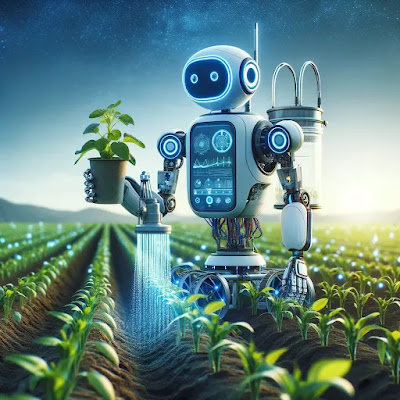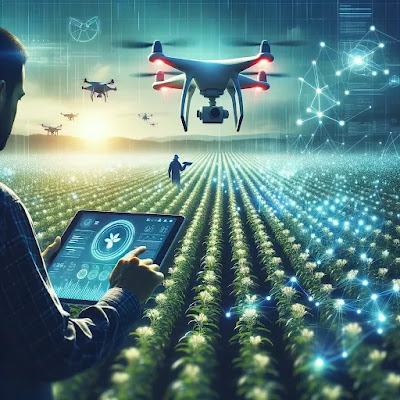Harvesting the Future:
How AI is Cultivating a New Era in Agriculture
One of the most significant contributions of AI in agriculture is precision farming. AI-driven systems analyze data from satellite images and sensors in the field to monitor crop health, soil conditions, and weather patterns. This information enables farmers to optimize planting schedules, irrigation, and fertilization, reducing waste and improving yields.
Moreover, AI algorithms can predict crop diseases and pest infestations, allowing for early intervention and minimal use of pesticides. This not only safeguards crops but also reduces environmental impact. Automated drones and robots, guided by AI, perform tasks such as weeding, harvesting, and spraying, reducing the need for manual labor and enhancing efficiency.
Additionally, AI plays a crucial role in supply chain optimization, predicting demand, and managing inventory, thereby reducing losses and ensuring that produce reaches the market in optimal condition.By integrating AI into agriculture, the sector can achieve unprecedented levels of efficiency and sustainability, feeding the growing global population while conserving precious natural resources. The future of farming is smart, and AI is at the forefront of this transformation.



Comments